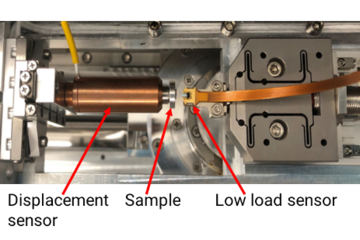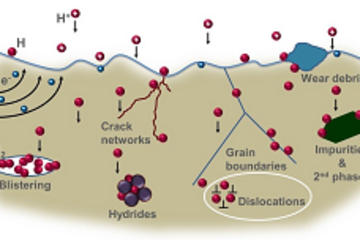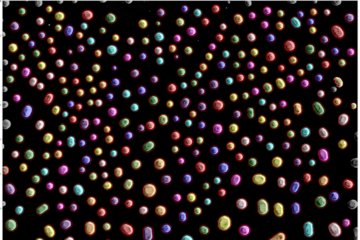All genres
81.
Talk
Crystal plasticity study of monocrystalline stochastic honeycombs under in-plane compression. 8th International Conference on Multiscale Materials Modeling, MMM2016, Dijon, France (2016)
82.
Talk
A Spectral Method to Solve Multi-Physics Coupled Elasto-Viscoplastic Boundary Value Problems. 8th International Conference on Multiscale Materials Modeling, MMM2016, Dijon, France (2016)
83.
Talk
Using the Spectral Solver. 5th International Symposium on Computational Mechanics of Polycrystals, CMCn 2016 and first DAMASK User Meeting, Düsseldorf, Germany (2016)
84.
Talk
Spatially Resolved Through-Process Modelling. MSE 2016, Darmstadt, Germany (2016)
85.
Talk
Strongly versus weakly non-local dislocation transport and pile-up. 24th International Congress of Theoretical and Applied Mechanics, Montreal, Canada (2016)
86.
Talk
Comparison of algorithms and solution methods for classic and phase-field-based periodic inhomogeneous elastostatics. ECCOMAS Congress 2016, Crete, Greece (2016)
87.
Talk
Integrated experimental and simulation analysis of lattice defects and micromechanics in steels. Materials Modeling Colloquium, Universität Stuttgart, Stuttgart, Germany (2016)
88.
Talk
Numerically Robust Spectral Methods for Crystal Plasticity Simulations of Heterogeneous Materials. ECCOMAS Congress 2016, Crete, Greece (2016)
89.
Talk
Micromechanics using spectral method: Modelling of interface decohesion in polycrystalline microstructures. PETSc User Meeting, Vienna, Austria (2016)
90.
Talk
Modeling Interface Decohesion in a Spectral Framework. ECCOMAS Congress, Crete, Greece (2016)
91.
Talk
Crystal Plasticity Simulations - Fundamentals, Implementation, Application. Micromechanics of Materials, Zernike Institute for Advanced Materials, University of Groningen
, Groningen, The Netherlands (2016)
92.
Talk
DAMASK Evolving From a Crystal Plasticity Subroutine Towards a Multi-Physics Simulation Tool. Focus Group Meeting “Metals”, SPP 1713, Bad Herrenalb, Germany (2016)
93.
Talk
On the usage of HDF5 in the DAMASK crystal plasticity toolkit. 2nd International Workshop on Software Solutions for Integrated Computational Materials Engineering - ICME 2016, Barcelona, Spain (2016)
94.
Talk
Application of a Spectral Method Framework to Interrogate the Influences of Experimental Uncertainty on Crystal Plasticity. Materials Science & Technology 2015, Columbus, USA (2015)
95.
Talk
DAMASK: The Düsseldorf Advanced Material Simulation Kit for studying crystal plasticity using an FE based or a spectral numerical solver. Seminar of the Centro Nacional de Investigaciones Metalúrgicas (CENIM) del CSIC , Madrid, Spain (2015)
96.
Talk
Spectral Method Simulation of High Phase-Contrast Materials: A Joint Numerical-Experimental Study. 9th European Solid Mechanics Conference ESMC 2015
, Madrid, Spain (2015)
97.
Talk
Spectral Method Simulation of High Phase-Contrast Materials: A Joint Numerical-Experimental Study. 12th International Conference on the Mechanical Behavior of Materials ICM 12
, Karlsruhe, Germany (2015)
98.
Talk
Numerically Robust Spectral Methods for Crystal Plasticity Simulations of Heterogeneous Materials. TMS 2015, Orlando, FL, USA (2015)
99.
Talk
Multiscale modelling of hydrogen embrittlement in metals. DPG Spring Meeting, Berlin, Germany (2015)
100.
Talk
Experiments on and Simulation of Dual Phase Steel Micromechanics. DGM AK Mikrostrukturmechanik, Kassel, Germany (2015)











